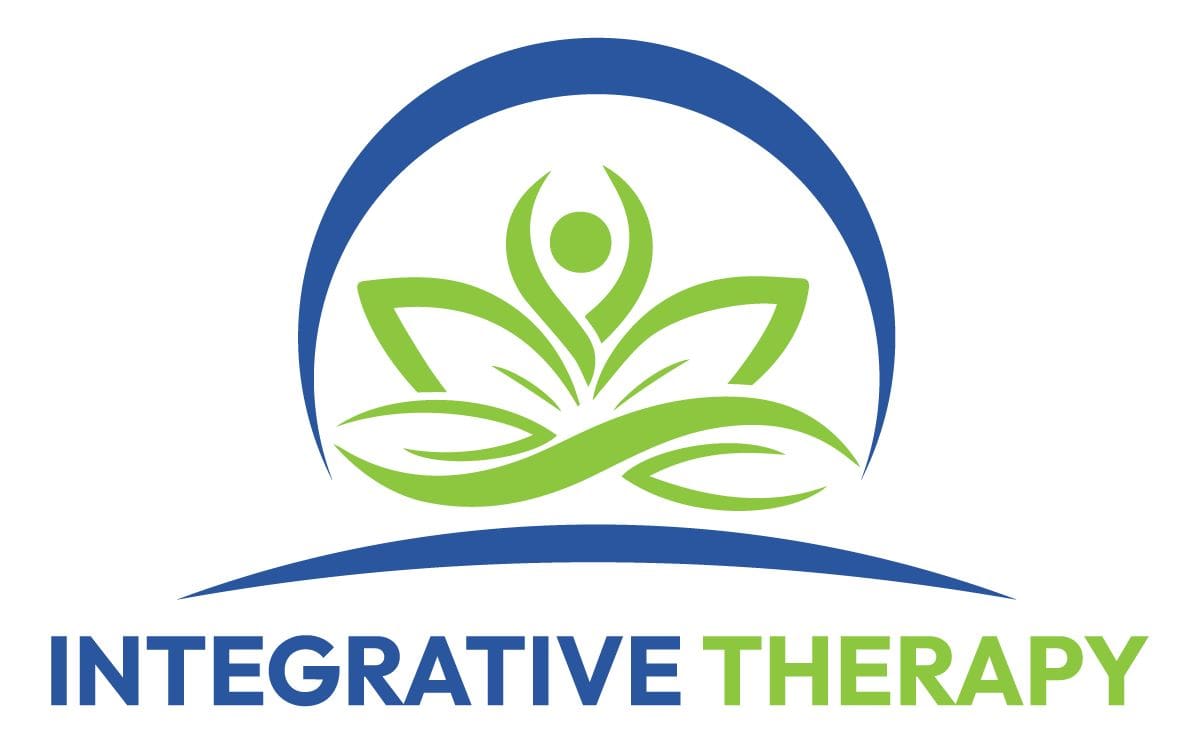
Therapies
Whether you’re recovering from an injury, managing a chronic condition, or looking to improve mobility, our expert therapists provide personalized treatment plans tailored to your needs.

Therapy Solutions for Optimal Healing

Orthopedic Manual Therapy
What It Is
Orthopedic Manual Therapy (OMT) is an advanced, evidence-based physical therapy approach that uses specialized hands-on techniques to evaluate and treat musculoskeletal and neuromuscular dysfunctions. It targets biomechanical, arthrokinematic (joint surface motion), and neurodynamic restrictions through precise joint and soft tissue mobilization.
- Joint Mobilization – Graded oscillatory or sustained movements applied to synovial joints to increase joint mobility, decrease pain, and restore normal arthrokinematics. Techniques follow the Kaltenborn-Evjenth and Maitland conceptual models.
- High-Velocity Low-Amplitude Thrust (HVLAT) – A rapid, controlled manipulation technique applied at the end range of a joint’s motion to reduce joint fixation, stimulate mechanoreceptors, and inhibit nociceptive input.
- Muscle Energy Techniques (MET) – A form of active-assisted mobilization where the patient’s voluntary muscle contraction is used against a controlled counterforce to improve muscle length and joint range of motion.
- Soft Tissue Mobilization (STM) – Direct or indirect manipulation of myofascial structures to enhance tissue pliability, reduce fascial restrictions, and restore local blood flow and metabolic exchange.
- Neurodynamic Techniques – Mobilization of peripheral nerves within their fascial sheaths to improve neural gliding, reduce intraneural pressure, and enhance conduction.
What It Treats
- Joint hypo- and hypermobility
- Myofascial adhesions and trigger points
- Postural and structural imbalances
- Sports injuries and repetitive strain injuries
- Degenerative joint and disc disease
- Chronic pain and musculoskeletal dysfunction
Benefits
- Restores joint biomechanics and functional alignment
- Enhances proprioceptive input and motor control
- Reduces muscle guarding and protective spasm
- Improves joint range of motion and tissue extensibility
- Facilitates pain relief through stimulation of mechanoreceptors and downregulation of
nociceptive input - Accelerates post-injury rehabilitation and neuromuscular retraining
Craniosacral Therapy
What It Is
Craniosacral Therapy (CST) is a manual therapy approach that focuses on the craniosacral system — which includes the membranes, cerebrospinal fluid (CSF), and connective tissues surrounding the brain and spinal cord. The therapy is based on the concept that subtle rhythmic fluctuations in the craniosacral system can be palpated and influenced to restore neurological balance and improve systemic function.
- Palpation of Craniosacral Rhythm (CSR) – A subtle, rhythmic pulse caused by the production and reabsorption of CSF, typically ranging from 6 to 12 cycles per minute.
Therapists assess CSR symmetry, amplitude, and rate.
- Dural Tube Mobilization – Gentle traction and decompression techniques are applied to the spinal dura mater to relieve fascial restrictions and enhance neural conduction.
- Somatoemotional Release (SER) – The release of tissue memory and emotional trauma stored within the fascial network through facilitated awareness and tissue manipulation.
- Sphenobasilar Junction (SBJ) Techniques – Correction of positional and rotational dysfunctions at the sphenobasilar synchondrosis (a keystone joint in the cranial base) to restore balanced cranial movement and dural tension.
- Facilitated Segmental Unwinding – The therapist allows the body to follow intrinsic patterns of movement, releasing tension patterns held within the central nervous system and connective tissue matrix.
What It Treats
- Concussion and traumatic brain injury (TBI)
- Headaches and migraines
- Temporomandibular joint (TMJ) dysfunction
- Chronic pain syndromes (e.g., fibromyalgia)
- Neuroimmune dysfunction
- Stress-related disorders and insomnia
Benefits
- Enhances CSF circulation and intracranial pressure regulation
- Reduces sympathetic nervous system hyperactivity
- Improves vagus nerve tone and parasympathetic activity
- Enhances fascial and connective tissue pliability
- Promotes deep relaxation and emotional release
- Facilitates autonomic nervous system balance
Therapeutic Exercise
What It Is:
Therapeutic exercise is the targeted application of specific movement patterns to restore strength, flexibility, neuromuscular control, and biomechanical alignment. Exercises are prescribed based on a thorough assessment of joint mechanics, muscle activation patterns, and compensatory movement strategies. Techniques may include:
- Proprioceptive training – Enhancing body awareness and joint position sense.
- Dynamic stabilization – Improving co-contraction and motor control.
- Isometric and eccentric strengthening – Building muscle strength through controlled loading.
- Functional movement retraining – Restoring efficient motor patterns for daily activities.
What It Treats:
- Muscle weakness and imbalance
- Joint instability
- Postural dysfunction
- Overuse injuries
- Neuromuscular incoordination
Benefits It Provides:
- Restores Muscular Strength and Endurance
- Enhances Joint Stability and Mobility
- Improves Neuromuscular Control and Proprioception
- Corrects Biomechanical Imbalances
- Reduces Injury Risk
Visceral Mobilization
What It Is:
Visceral mobilization is a highly specialized manual therapy technique that targets the fascial and ligamentous connections of the internal organs (viscera) to improve their mobility, motility, and functional relationships with surrounding structures. Organs are encased in connective tissue (visceral fascia) that links them to the musculoskeletal system and the central nervous system. Dysfunction arises when these tissues become restricted due to inflammation, trauma, surgery, or chronic tension, leading to impaired organ movement and visceral-somatic reflexes. Through precise, gentle pressure and mobilization techniques, the therapist assesses and corrects these restrictions to restore balanced organ function and improve overall biomechanical harmony.
What It Treats:
- Digestive issues – Visceral adhesions can impair peristalsis and nutrient absorption, contributing to conditions like irritable bowel syndrome (IBS), constipation, and acid reflux.
- Pelvic pain and dysfunction – Restrictions in the uterus, bladder, and colon can cause pelvic floor hypertonicity, dyspareunia, and urinary urgency.
- Post-surgical adhesions – Scar tissue from abdominal or pelvic surgery (e.g., C-section, appendectomy) can create mechanical drag on adjacent structures, leading to pain and limited mobility.
- Chronic back and sacroiliac joint pain – Fascial tension from visceral restrictions can alter pelvic alignment and sacral motion.
- Respiratory dysfunction – Diaphragmatic and rib cage restrictions from abdominal or thoracic adhesions can impair lung expansion and breathing patterns.
- Gynecological issues – Endometriosis, ovarian cysts, and uterine malpositioning can create visceral tension and contribute to menstrual irregularities and pelvic discomfort.
Benefits It Provides:
- Restores Organ Mobility and Motility: Improves the functional range of motion of the organs and their fascial attachments.
- Normalizes Visceral-Somatic Reflexes: Reduces muscular guarding and pain triggered by organ dysfunction.
- Enhances Lymphatic and Venous Drainage: Decongests tissues and improves nutrient and waste exchange.
- Improves Core Stability: Balances the tension between deep abdominal muscles, pelvic floor, and diaphragm.
- Reduces Neurovascular Compression: Frees up vascular and neural structures embedded in the visceral fascia.
Pediatric Therapy
What It Is:
Pediatric therapy is a specialized approach designed to address developmental, neurological, and musculoskeletal challenges unique to infants and children. Children's nervous systems are in a state of rapid plasticity, meaning that early intervention can have profound long-term benefits on motor development, coordination, and sensory integration. Pediatric therapy integrates principles of neurodevelopment, biomechanics, and sensory-motor learning to optimize motor milestones and functional independence. Techniques include play-based exercises, manual therapy, proprioceptive training, and neuromuscular re-education to support sensory and motor integration.
What It Treats:
- Torticollis and Plagiocephaly – Tightness in the sternocleidomastoid and cranial sutures can cause head tilting and skull asymmetry.
- Developmental Coordination Disorder (DCD) – Impaired motor planning and execution affect balance, coordination, and fine motor skills.
- Sensory Processing Disorder – Hypersensitivity or hyposensitivity to touch, sound, and movement impacts motor responses and behavior.
- Cerebral Palsy and Neuromotor Conditions – Muscle spasticity and poor motor control limit functional movement.
- Gait Abnormalities – Toe walking, in-toeing, and flat feet can stem from muscular imbalance and poor proprioceptive feedback.
- Feeding and Swallowing Issues – Poor oral motor coordination affects latch, chewing, and swallowing efficiency.
Benefits It Provides:
- Promotes Sensory-Motor Integration: Enhances the connection between sensory input and motor output.
- Supports Postural Control and Stability: Strengthens core and trunk muscles for better balance and alignment.
- Improves Neuroplasticity: Rewires motor patterns and enhances adaptive responses to sensory input.
- Enhances Muscle Tone and Flexibility: Reduces spasticity and improves joint mobility.
- Facilitates Functional Independence: Supports self-care, mobility, and social interaction skills.
Nerve Mobilization
What It Is
Nerve Mobilization, also referred to as neural gliding or neurodynamics, is a specialized manual therapy technique focused on restoring the mechanical and physiological function of peripheral and central nerves. It addresses nerve compression, tethering, and intraneural inflammation by improving nerve sliding, tensioning, and excursion within surrounding tissues.
- Sliding Techniques – Controlled movement of the nerve relative to adjacent tissues to reduce adhesions and improve neural glide.
- Tensioning Techniques – Gradual stretching of the nerve to increase tolerance to mechanical load and enhance connective tissue elasticity.
- Oscillatory Mobilization – Low-amplitude, rhythmic movements to stimulate mechanoreceptors and reduce neural hypersensitivity.
- Segmental Mobilization – Mobilization of spinal segments and nerve roots to relieve compression and improve foraminal space.
- Desensitization Exercises – Gradual exposure to mechanical and sensory input to retrain neural processing and reduce pain perception.
What It Treats
- Sciatica and lumbar radiculopathy
- Carpal tunnel syndrome
- Thoracic outlet syndrome
- Ulnar nerve entrapment
- Complex regional pain syndrome (CRPS)
- Post-surgical nerve adhesions
Benefits
- Improves neural conduction velocity and signal integrity
- Enhances nerve root mobility and reduces compression
- Reduces intraneural pressure and inflammation
- Restores normal neural excursion and mechanical interface function
- Decreases paresthesia (numbness and tingling)
- Facilitates improved motor control and muscular recruitment
Tongue Tie Therapy (Infant/Adult)
What It Is:
Tongue tie (ankyloglossia) is a congenital condition where the lingual frenulum is abnormally short or tight, restricting tongue movement. This impacts the ability to breastfeed, swallow, and articulate sounds properly. Tongue tie therapy involves a multidisciplinary approach that includes myofascial release of the oral, cervical, and cranial tissues, targeted tongue exercises, and postural corrections. In cases where a frenectomy (surgical release) is performed, therapy supports tissue healing and functional retraining.
What It Treats:
- Poor latch and ineffective breastfeeding – Restricted tongue movement affects the ability to maintain suction and efficient milk transfer.
- Speech difficulties – Impaired lingual mobility affects articulation of sounds like "t," "d," "l," and "r."
- Oral breathing and sleep issues – Restricted tongue mobility may impair airway patency, contributing to mouth breathing and sleep-disordered breathing.
- TMJ dysfunction – Compensatory jaw tension from restricted tongue movement can cause clicking, pain, and limited mouth opening.
- Swallowing and feeding issues – Poor tongue coordination impacts bolus control and swallowing mechanics.
Benefits It Provides:
- Enhances Oral Motor Function: Improves tongue elevation, lateralization, and suction.
- Supports Speech Clarity: Increases precision of lingual movements.
- Reduces Jaw and Neck Tension: Normalizes orofacial muscle tone.
- Improves Nasal Breathing and Sleep Quality: Opens the airway by correcting tongue posture.
- Promotes Proper Craniofacial Development: Encourages balanced jaw and palate growth.
Myofascial Release
What It Is:
Myofascial release (MFR) is a manual therapy technique targeting the myofascial system—a three-dimensional network of collagenous connective tissue that surrounds, protects, and supports muscles, bones, nerves, and organs. The fascia has both superficial and deep layers:
- Superficial fascia lies beneath the dermis and houses sensory nerves, lymphatic vessels, and adipose tissue.
- Deep fascia encases muscles, tendons, ligaments, and joint capsules, forming functional compartments that transfer mechanical forces.
- Visceral fascia surrounds internal organs and connects them to musculoskeletal structures, allowing for coordinated organ-movement relationships.
Fascial dysfunction can result from trauma, inflammation, surgical scarring, or poor posture, leading to increased cross-linking between collagen fibers and loss of tissue elasticity. This creates myofascial trigger points—hyperirritable nodules within the muscle that generate referred pain and motor dysfunction.
MFR involves sustained, low-load stretching and compression applied at specific angles to soften fascial adhesions, increase tissue hydration, and restore fascial glide.
Techniques include:
- Direct myofascial release – Applying pressure to stretch the fascia and break adhesions.
- Indirect myofascial release – Following tissue resistance to facilitate a neuromuscular release.
- Cross-hand technique – Applying opposing forces to shear fascial layers apart.
What It Treats:
- Fibromyalgia and chronic pain syndromes – Myofascial restrictions amplify central sensitization and hyperalgesia.
- Tendinopathies – Fascial adhesions impair the tendon-muscle interface, reducing load capacity.
- Post-surgical scarring – Fascial remodeling improves mobility and vascular supply post-operatively.
- Thoracic outlet syndrome – Compression of the brachial plexus due to fascial tightening around the scalene muscles.
- Plantar fasciitis – Myofascial release of the plantar fascia reduces tension and pain
Benefits It Provides:
- Restores Fascial Tensile Strength: Improves the viscoelastic properties of the fascia, restoring length and pliability.
- Enhances Proprioception: Releases fascial tension, improving joint position sense and motor control.
- Improves Fluid Exchange: Myofascial decompression increases vascular perfusion and lymphatic drainage.
- Releases Trigger Points: Reduces spontaneous electrical activity in muscle spindle fibers and nociceptors.
- Promotes Neuromuscular Reeducation: Enhanced tissue mobility supports improved movement patterns.
Spine Rehabilitation
What It Is:
Spine rehabilitation is a multi-faceted therapeutic approach that addresses segmental dysfunction, muscular imbalance, and impaired neuromotor control of the spinal column. It incorporates manual therapy, therapeutic exercise, and motor retraining to restore optimal spinal alignment and joint mechanics.
Key Components:
- Spinal Mobilization and Manipulation – Improves intervertebral joint motion and reduces stiffness.
- Core Stabilization Training – Targets deep stabilizers (e.g., multifidus, transverse abdominis) to improve segmental control.
- Postural Retraining – Corrects kyphosis, lordosis, and scoliosis patterns.
- Neuromuscular Reeducation – Improves proprioceptive awareness and spinal reflexes.
- Flexibility and Strength Training – Enhances dynamic control and load tolerance of the spine.
What It Treats:
- Herniated Discs – Decompression techniques relieve pressure on nerve roots.
- Spondylolisthesis – Core stabilization restores spinal segment integrity.
- Facet Joint Syndrome – Mobilization restores joint gliding mechanics.
- Sciatica – Nerve mobilization reduces irritation and mechanical compression.
- Post-Surgical Spinal Dysfunction – Scar tissue and mechanical imbalance correction.
Benefits It Provides:
Restores Spinal Biomechanics: Improves joint coupling and load transmission.
Enhances Motor Control: Improves segmental muscle firing patterns.
Reduces Chronic Pain: Central and peripheral desensitization reduces nociceptive signaling.
Corrects Postural Dysfunctions: Improves alignment of cervical, thoracic, and lumbar segments.
Enhances Functional Mobility: Improves rotational, flexion, and extension capacity.
Cupping Therapy
What It Is:
Cupping therapy is a myofascial decompression technique that creates negative pressure between the skin and underlying tissues using suction from glass, silicone, or plastic cups. The negative pressure induces a mechanical lift in the superficial and deep fascial layers, disrupting adhesions, improving microvascular perfusion, and stimulating neural reflexes.
There are several physiological effects of cupping:
- Decompression of soft tissues – Lifting of the fascia allows for separation of adhered tissue layers.
- Increased capillary permeability – Encourages local immune response and improves tissue oxygenation.
- Stimulation of cutaneous mechanoreceptors – Activates C-fibers and A-delta fibers, influencing pain modulation through the spinal cord’s dorsal horn.
- Fascial gliding – Mobilization of the fascial matrix promotes lymphatic drainage and tissue hydration.
Techniques Include:
- Static Cupping – Cups are left in place to create sustained tissue lift.
- Dynamic Cupping – Cups are glided along the muscle fibers to mobilize deeper tissue layers.
- Flash Cupping – Rapid suction and release to stimulate neural receptors and vascular perfusion.
What It Treats:
- Myofascial pain syndromes – The negative pressure decompresses tight myofascial tissues.
- Delayed onset muscle soreness (DOMS) – Enhances recovery by increasing blood flow and clearing metabolic waste.
- Scar tissue and adhesions – Mobilizes collagen cross-links to improve tissue extensibility.
- Respiratory dysfunction – Cupping over the intercostal muscles improves rib cage mobility and lung expansion.
- Peripheral nerve entrapment – Releases fascial compression on superficial and deep nerves.
Benefits It Provides:
- Reduces Sympathetic Tone: The decompression effect stimulates parasympathetic dominance, improving relaxation and recovery.
- Increases Capillary and Lymphatic Flow: Promotes cellular exchange and waste removal.
- Enhances Fascial Glide: Improved fascial mobility reduces mechanical resistance to joint movement.
- Normalizes Muscle Tone: Decompressing hypertonic muscles reduces myofascial guarding.
- Reduces Soft Tissue Hypoxia: Improved oxygenation decreases local metabolic acidosis and pain sensitivity.
Kinesio Taping
What It Is:
Kinesio taping involves applying an elastic, breathable tape to the skin to provide structural support, improve proprioceptive feedback, and facilitate tissue decompression. The tape's elasticity allows for joint and muscle support without restricting range of motion.
Physiological Mechanisms:
- Skin-Lifting Effect: The tape's elasticity creates space between the epidermis and dermis, decompressing underlying capillaries, lymphatic vessels, and nerves.
- Proprioceptive Stimulation: The tape's cutaneous contact stimulates mechanoreceptors, enhancing motor coordination.
- Directional Support: Tape tension can facilitate or inhibit specific muscle patterns.
- Fluid Dynamics: Promotes lymphatic drainage and reduces interstitial edema.
What It Treats:
- Muscle Strains and Overuse Injuries
- Joint Instability and Ligament Sprains
- Lymphedema and Post-Surgical Swelling
- Tendinopathies
- Postural Imbalance
Benefits It Provides:
- Enhances Proprioceptive Feedback
- Reduces Muscle Fatigue
- Improves Lymphatic Drainage
- Corrects Biomechanical Dysfunction
- Increases Joint Stability
